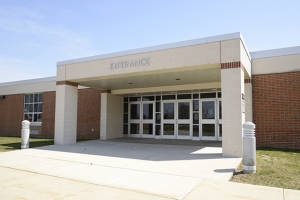
Considering homeschool for your family? Here are a few tips to help you get started.
- Be prepared for some hard work, especially in the beginning. Homeschooling might be the right choice for your family, but that doesn’t mean it will be easy. There is no ready-out-of-the-box solution. While it’s possible to purchase a full curriculum, any educational program implemented in the home will need to be tailored to a child’s individual needs. Homeschool is going to take prep time and follow through.
- Join a homeschooling co-op or support group. As every homeschooling parent has heard, children need opportunities to socialize. Co-ops and support groups provide space for children to interact with peers and adults outside the family unit. For parents, these groups provide a network of like-minded families to share tips and recommend resources.
- Create a learning space. While working out a school routine for your family, be sure to establish a great learning space. If possible, choose a work surface that isn’t needed for other purposes throughout the day (for instance, try to avoid the dining room table). Many students respond well to an aesthetically pleasing space that is free from distractions. Don’t forget to study outside now and then—it’s one of the best perks of homeschooling! Discover more tips on how to get organized for school at www.sandiegofamily.com/resources/education-directory/get-organized-for-school.
- Explore the local community. Any day is a great day for a field trip when the family learns at home. If there’s a place you’d like to explore with the kids, find ways to pair your visit with a future lesson plan. Experiential learning is wonderful for young minds. Find our best ideas for STEM field trips at www.sandiegofamily.com/things-to-do/out-about/expose-kids-to-stem-learning.
- Follow their interests. Every child is obsessed with something. Tailor lesson plans to a student’s biggest interests. For example, if a child loves space (astronomy), parents can utilize that enthusiasm in every subject, not just science. Choose a writing prompt about supernovae. Re-write word problems in math to include astronauts, stars and planets. Be sure to include a galaxy-inspired art project.
- Relax, you spent enough time on school. Many homeschooling parents report spending two to three hours on instructional activities per day. That’s perfectly normal. Learning tasks simply move faster in a homeschool environment than they do in a traditional classroom.
- Take brain breaks. Kids need time to play. Be sure the daily routine includes plenty of time for unstructured play, which is crucial for a child’s brain development. You might also like to include smaller, more structured brain breaks, such as a daily nature walk or yoga class.
Anne Malinoski is a contributing writer and mother of two boys.
___________

















